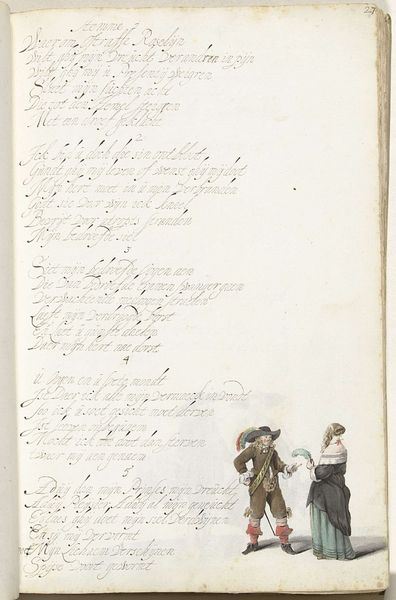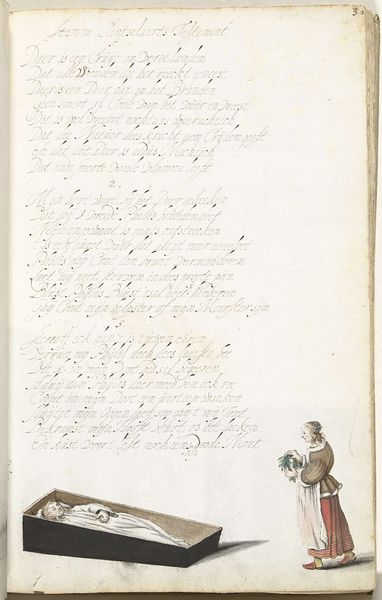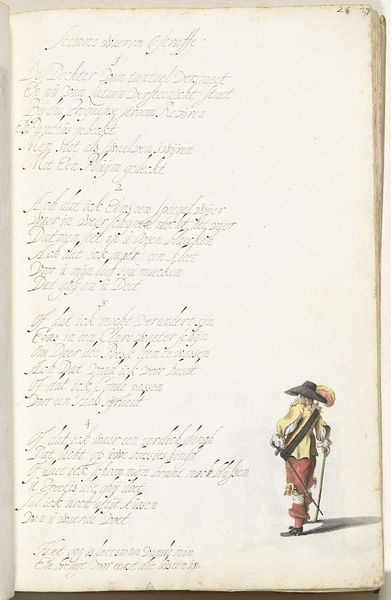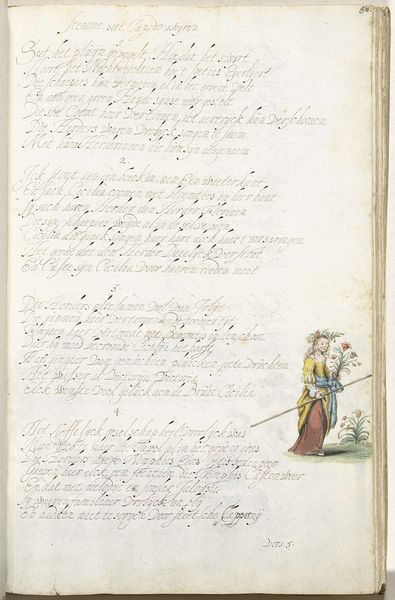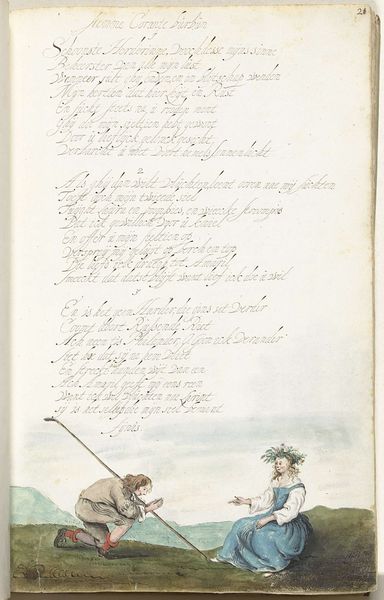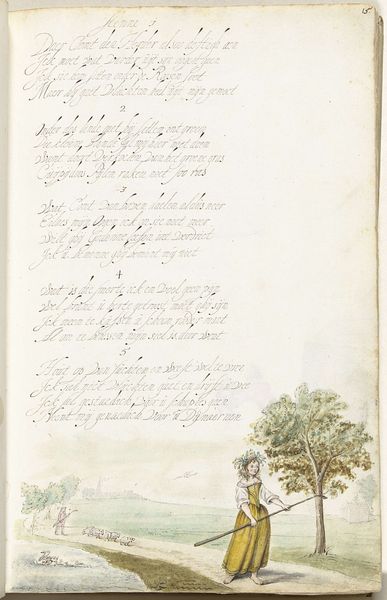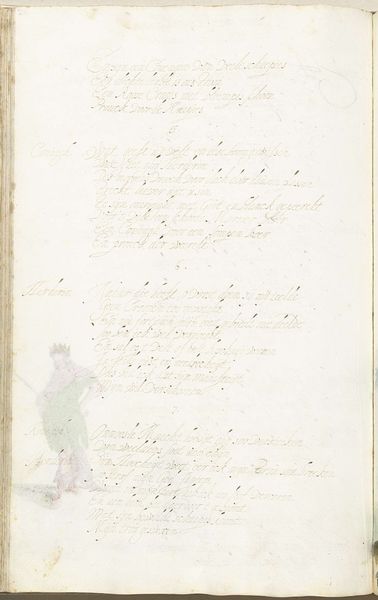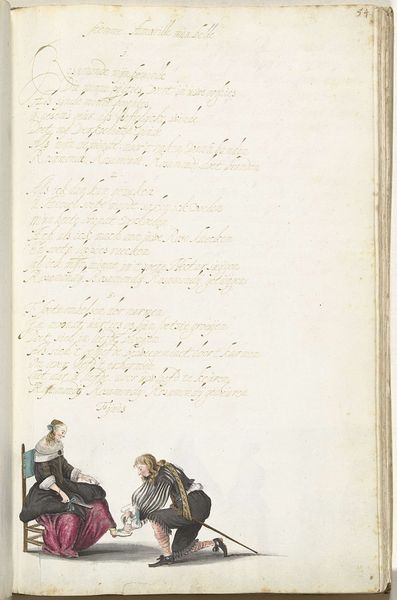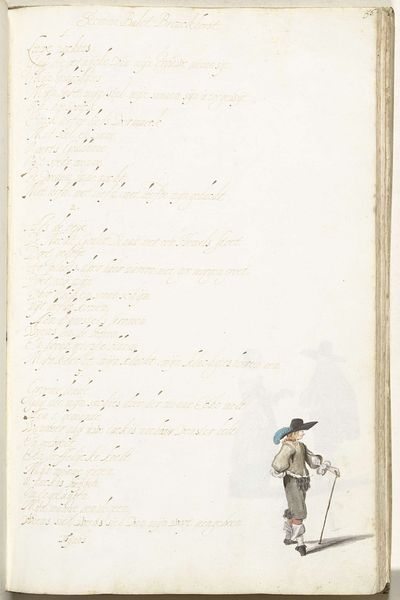
drawing, coloured-pencil, paper, pen
#
drawing
#
coloured-pencil
#
narrative-art
#
baroque
#
paper
#
intimism
#
coloured pencil
#
pen
#
genre-painting
#
watercolor
Dimensions: height 313 mm, width 204 mm
Copyright: Rijks Museum: Open Domain
Curator: Here we have a drawing rendered in colored pencil, pen, and watercolor on paper by Gesina ter Borch, dating back to approximately 1654. It's titled "Jozef en de vrouw van Potifar"—"Joseph and Potiphar's Wife." Editor: Immediately, I see drama. The poor bloke is clearly trying to escape something, anything. It's the kind of awkward you can practically taste. You know, like running into an old flame at a grocery store— multiplied by Biblical proportions of embarrassment and trouble. Curator: Indeed. The narrative focuses on the biblical story of Joseph, who resists the advances of his master Potiphar’s wife. Ter Borch depicts the precise moment of Joseph’s escape, adding her delicate and intricate touch to a very human—and politically charged—story. Remember that interpretations of this tale during the 17th century were linked to morals and social conduct. Editor: So it’s like a visual sermon, only far more gossipy? And drawn, rather beautifully, within the lines. Seriously though, this feels very intimate. You know, less about the grand pronouncements and more about the tension hanging in the air, that visible "Oh dear…" feeling when boundaries are crossed. I guess Joseph also looks pretty dashing—maybe not sermon material. Curator: Ter Borch's composition guides the eye through the unfolding story, emphasizing the power dynamics through the gestures and spatial arrangement of the characters. Her attention to detail enriches the moral lesson with emotional depth and relatability—the scandal certainly feels as palpable as a contemporary gossip magazine. But of course, context informs everything. Editor: Exactly, history provides context but sometimes art does not explain it; rather, it simply vibrates with that very old, very human energy. Thanks to this drawing, at least we see Potiphar's wife and Joseph caught in a moment. Curator: It certainly gives one plenty to ponder! Editor: Quite. Makes you rethink a little the role of drawing to reveal something interesting about the 17th century and also a tiny bit about yourself.
Comments
No comments
Be the first to comment and join the conversation on the ultimate creative platform.
